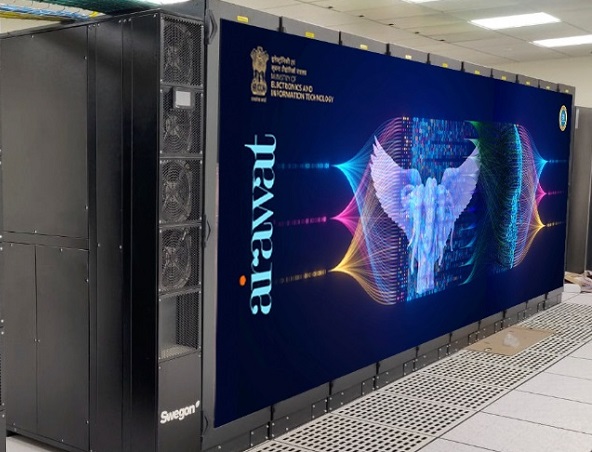
November 23, 2023: There is no change in India’s entries in the global biannual Top 500 supercomputer list released last week.
Airawat ( AI Research Analytics and Knowledge Dissemination Platform, clocking 8.5 peta flops/sec at the Centre for Development of Advanced Computing (C-DAC), Pune under the initiative of Ministry of Electronics and IT, remains the fastest supercomputer in India. It has been designed at C-DAC and built by Faridabad-headquartered Netweb Technologies. It is ranked no. 90 in the Top 500 list, a falloff 25 places since the last listing in June 2023.
The second fastest supercomputer in India is also to be found at C-DAC: the Param Siddhi which attained a top speed of 4.62 peta flops. It is a Bull Sequana machine acquired from Eviden, the supercomputing arm of France-based Atos, who is working with C-DAC to progressively shift the assembly of its supercomputers to India. It is ranked no.163 in the current Top 500.
The no.3 India-based supercomputer is Pratyush, a Cray XC40 supercomputer from HPE with max speed of 3.76 petaflops housed in the Indian Institute of Tropical Meteorology, Pune and ranked no. 201.
The final supercomputer in India that finds a place in the latest Top 500 rankings is a high performance computer being used for weather forecasting: Mihir housed at the National Centre for Medium Range Weather Forecasting (NCMRWF) , in Noida, in the national capital region and has a top computational speed of 2.57 petaflops and is ranked 354. It is a Cray-HPE supercomputer computer.
Global first
When it comes to the global first, the top slot remains with the Oak Ridge National Laboratory (ORNL) in Tennessee, USA, and its Frontier computer, HPE-Cary machine with a computational top speed of 1.194 ExaFlop/s. It remains the only exascale machine in Top500.|The Top 500 ranking of the world’s supercomputers is released twice a year at the International Supercomputing Conference in June, and at the ACM/IEEE Supercomputing Conference in November.
--------------------------------------------------------------------------------------------------
Tech note: Computer speeds are measured in floating-point operations per second or FLOPS. These are simple arithmetic operations, like addition or multiplication, involving a number containing a decimal, say 2.5. A person can typically solve an operation such as addition with a pencil and paper in one second—that would rate as one FLOP.
An exascale computer can perform more than 1,000,000,000,000,000,000 FLOPS, or 1 exaflop that is one followed by 18 zeroes. In comparison a petaflop or one thousand tera flops is represented by one followed by 15 zeroes. We are familiar today with gigahertz speeds or gigabytes of storage. To put it in perspective, a petaflop is 1million gigaflops. All supercomputers today except the world’s no. 1, the Frontier, are as yet petaflop machines.
A longer vesion of this article appeared in Swarajya